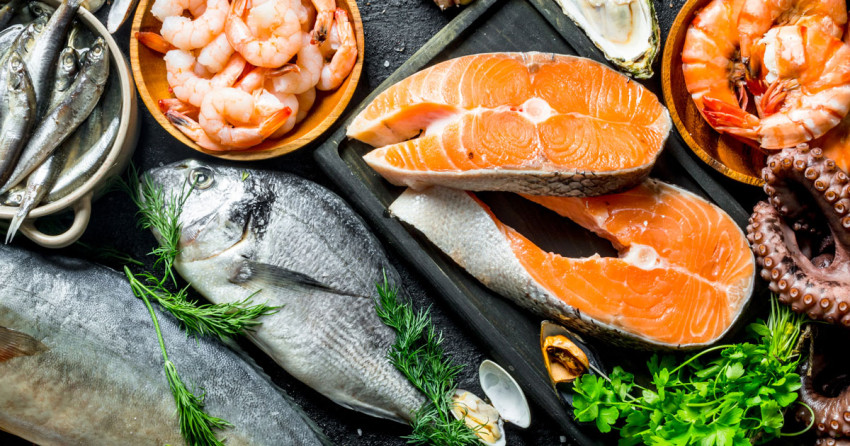
When planning meals for cancer patients, seafood comes to mind frequently. It contains just a fair amount of nutrition, both omega-3 fatty acids essential for those with cancer and lean protein, too. But an important problem often unnoticed by all concerned is the source of raw water products. In this day and age of diets emphasizing “You are what you eat,” how healthy is it really to stuff oneself with fish? It is not very healthy at all because even those nutritional aspects that have benefited humanity for centuries can be wiped out like this.
The health of fish, much like our own, is intricately linked to their environment. In an era where water pollution is increasingly prevalent, understanding the source of your seafood becomes not just a matter of taste or preference but one of health and safety, particularly for cancer patients whose immune systems may already be compromised.
The Health Risks of Contaminated Fish
In addition, fish have the potential to be helpful to the body, too. Fish health depends on the circumstances in which it was raised. Pollution in water can result in fish taking in dangerous toxins, which are passed on to people who eat them. It is in this way that these toxins accumulate while some small ones attract larger ones. Larger fish's eating habits mean they develop a large stockpile of toxins like these that come through the food chain from small to large fish.
The doctors from the Best ayurvedic cancer hospital in India say a number of recent studies have made clear just how much danger fish--or, more precisely, what they eat in the environment--can pose to people. Researchers from the Scripps Institution of Oceanography in California examined levels of contamination and found that fish, wherever they are in the world, are contaminated with industrial and agricultural poisons. At the same time, a study in 2019 published by Nature argued that fish are a major source of human methylmercury exposure. Further, a Canadian study released in 2021 found microplastics in fish caught from the Great Lakes.
Choosing Your Seafood Wisely
Dr. Pankaj Vashi, a gastroenterologist and Vice Chief of Staff at CTCA Chicago, emphasizes the importance of knowing the origin of your fish. He advises that fish from certain sources, such as Lake Michigan, should be consumed at most once a week due to potential contamination. However, fish from cleaner sources, like open ocean waters, can be eaten more frequently.
Big fish, like sharks and swordfish, are famous for having a lot of mercury and other bad things. Eating lots of these fish could make you sick or get a disease. The US environmental group EPA tells kids and women who are having a baby or giving milk from their breasts to limit how much fish they eat from certain waters.
Tools for Selecting Safe and Sustainable Seafood
One way to ensure the fish you consume is safe and sustainable is using various phone apps designed to help consumers make informed choices. These apps can indicate whether the seafood in stores or restaurants comes from responsible and sustainable sources likely to produce healthy products.
If you are given fish caught by someone else, the EPA recommends inquiring about its origin and checking if consumption advisories were issued for those waters.
Points to Remember
When choosing seafood for a cancer patient's diet, it is important to think about its health advantages and possible dangers from pollution. Here are some essential tips to ensure safe and healthy seafood consumption:
Know the Source: Opt for fish from clean, unpolluted waters. Avoid seafood from areas known for industrial or agricultural pollution.
Choose Smaller Fish: Larger predatory fish like shark and swordfish often have higher levels of mercury and other toxins. Smaller fish tend to accumulate fewer toxins.
Check Local Advisories: Before eating fish caught locally, check warnings about pollution in those waters to make sure it's safe.
Sustainable Choices: Use phone apps or resources to choose seafood from healthy and responsible places. These are more likely to be free of harmful things in them.
Limit Certain Types: For people at risk, such as kids and moms-to-be, it's best to limit or not eat fish with lots of mercury.
Diversify Your Choices: Eating different kinds of seafood lowers the chance of getting harmful substances from certain fish types.
Cook Properly: Make sure you cook fish and shellfish well. This will lower the chances of getting sick from food, which is especially important for cancer patients whose bodies can't fight off germs easily.
These rules from the Best ayurvedic cancer hospital in Delhi can help cancer patients eat seafood and get nutritional benefits while also reducing possible health dangers.
Conclusion
In conclusion, seafood is an essential part of the diet for cancer patients. It provides them with great nutritional value, and its source is equally important indeed. The waters that the fish come from also determine the nutrition seafood can provide. For cancer patients for whom diet is such an important part of treatment and recovery, it is essential that the seafood they eat should contain no harmful additives or pollutants.
By knowing where their seafood comes from, seeking sustainable and ethically sourced products, and taking advantage of the information resources at hand, cancer patients are able to take seafood back into their diets. In cancer patients, this careful approach allows them to take advantage of all of the nutritional properties of seafood, thereby promoting their chances for recovery and supporting their bodies at this critical time.




